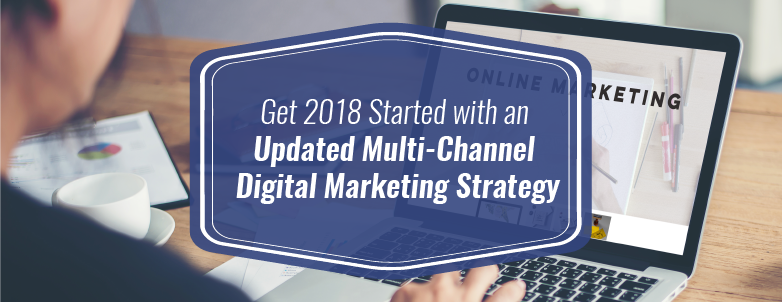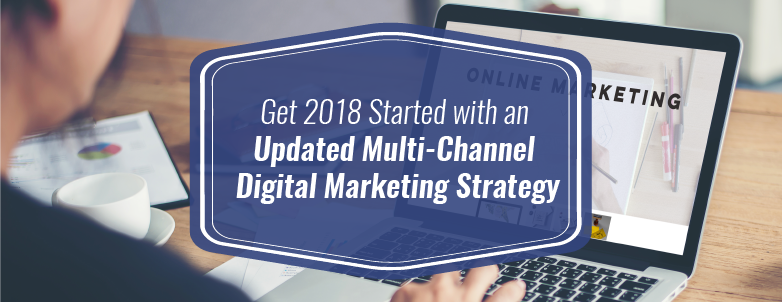“Multi-channel marketing is the implementation of a single strategy across multiple channels or platforms, thus maximizing opportunities to interact with prospective customers,” according to digital marketing agency Emarsys. Whether you amplify content or gain people’s attention through Facebook live or other multimedia ads, it’s crucial to think about what your target customer might be interested in and then tailor content to their desires. You can even upload your product catalog to Facebook and after setting up the campaign, the social network will handle the rest (such as matching people with the right product). Email While social media is very effective as both introductory and retargeting channel, emails are most effective when retargeting potential customers. A recent case study confirmed that “Coordinating messaging across channels resulted in reaching customers who were 22% more likely to purchase than those only reached by email.” AdWords You can craft AdWords campaigns to function at the top, middle, and bottom of the funnel. Making these marketing tools available right inside the ad can cut down significantly on the number of steps in your sales funnel. SMS/Text messaging Speaking of text messages: retargeting potential customers is not restricted to e-mails and Google AdWords. Text messaging (SMS) is another way — and an increasingly popular one — to lead consumers further down the sales funnel. Google AdWords can lead to customer service conversions; social media can lead to email and text message opt-ins; email in turn can be reinforced by text messages, which could lead back to customer service. In addition to this data, keeping track of conversion rates between the various platforms will help you measure success and create a continuously more effective multi-channel digital marketing strategy.
Did you know that 15 years ago the average consumer used two touch-points when buying an item, while consumers today run through an average of almost six touch-points?
This means that reaching new customers has become significantly more complex. With new platforms and channels still emerging, consumers have more and more choices and are demanding greater attention from brands trying to reach them.
The concept of multi-channel digital marketing has gained popularity among digital marketers over the last few years as brands and agencies have realized that one-off campaigns targeting potential customers on only one channel at a time no longer cut it.
In this article, we will examine updated multi-channel digital marketing tools and effective strategies; but before we do, let’s clarify what multi-channel marketing actually means.

What is multi-channel digital marketing?
“Multi-channel marketing is the implementation of a single strategy across multiple channels or platforms, thus maximizing opportunities to interact with prospective customers,” according to digital marketing agency Emarsys.
While as marketers we try to best predict how and where our customers might interact with us, giving them a choice — a say in the matter — leads to higher conversions. This requires casting a wide net of orchestrated touch-points and repeating your brand message across various channels, but ultimately improves your chance to raise customer awareness and let the message sink in to actually have an effect.
Let’s take a look at a handful of channels that effectively support a multitude of touch points and provide your customers with choice in selecting their preferred channel.
Social media
The advantage of social media is that it can be utilized as both introductory (initial interest) as well as retargeting channel leading a new customer further down the sales funnel.
Eyeballs through content
Facebook is a fantastic method to fill the top of your funnel with visitors. Whether you amplify content or gain people’s attention through Facebook live or other multimedia ads, it’s crucial to think about what your target customer might be interested in and then tailor content to their desires.
This doesn’t mean that you should advertise for your product right in the article or video, but rather cover topics that might interest potential customers and ultimately lead to your product page. At the top of the funnel, the goal is to create that first touchpoint which will enable you to start marketing to them through other channels, particularly email and remarketing.

Another helpful Facebook tool comes in handy at this stage of the sales funnel, especially if you run an ecommerce business — it’s called Dynamic Product Ads. These ads “automatically promote products to people who have expressed interest on your website, in your app or elsewhere on the internet,” according to Facebook.
You can even upload your product catalog to Facebook and after setting up the campaign, the social network will handle the rest (such as matching people with the right product).
While social media is very effective as both introductory and retargeting channel, emails are most…

COMMENTS